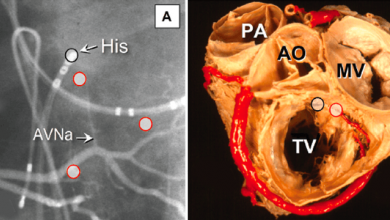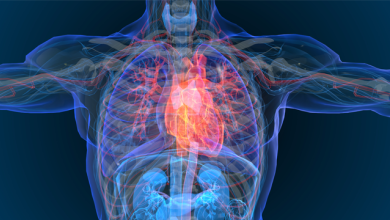Search results
Author(s):
Nadine Ali
,
Daniel Keene
,
Ahran D Arnold
,
et al
Added:
3 years ago
His bundle pacing in humans was first described in 1970 by Narula et al.1 They demonstrated that it was possible to stimulate the His bundle to produce normal physiological ventricular activation via the His-Purkinje system. However, the first report of permanent His bundle pacing, by Deshmukh et al., did not occur until 2000.2 In that study, His pacing was performed in a series of patients with…
View more
Author(s):
Ahran D Arnold
,
Nadine Ali
,
Daniel Keene
,
et al
Added:
3 years ago
Dear Sir,
We read Dr Zografos’ response to our article1 with interest. He agrees with the findings of our review but highlights two important issues for further discussion, which we address below.
Right ventricular lead position
Dr Zografos points out that randomised comparisons of different right ventricular lead positions have not shown superiority of septal pacing over apical pacing.2 This…
View more
Defining LBBB Patterns in CRT
Author(s):
Roderick Tung
,
Gaurav A Upadhyay
Added:
3 years ago
Article
Author(s):
Theodoros A Zografos
Added:
3 years ago
Dear Sir,
I read with great interest the elegant article by Ali et al.1 on His bundle pacing in issue 17.2 of AER. I do concur with the authors’ view and conclusions. However, there are two issues that may merit further attention.
First, specific His-bundle pacing is indeed the reasonable option that mimics the natural ventricular excitation. However, no benefit of mid-septal over apical pacing…
View more
Conduction System Pacing
Author(s):
Ahran D Arnold
,
Zachary I Whinnett
,
Pugazhendhi Vijayaraman
Added:
3 years ago
Article
Author(s):
Alexandre Raymond-Paquin
,
Santosh K Padala
,
Kenneth A Ellenbogen
Added:
2 years ago
Update in Cardiac Pacing
Author(s):
Nishant Verma
,
Bradley P Knight
Added:
3 years ago
Article
Author(s):
José-Ángel Cabrera
,
Robert H Anderson
,
Andreu Porta-Sánchez
,
et al
Added:
2 years ago
Author(s):
Fatima M Ezzeddine
,
Isaac G Leon
,
Yong-Mei Cha
Added:
8 months ago
Author(s):
Parikshit S Sharma
,
Pugazhendhi Vijayaraman
Added:
3 years ago















